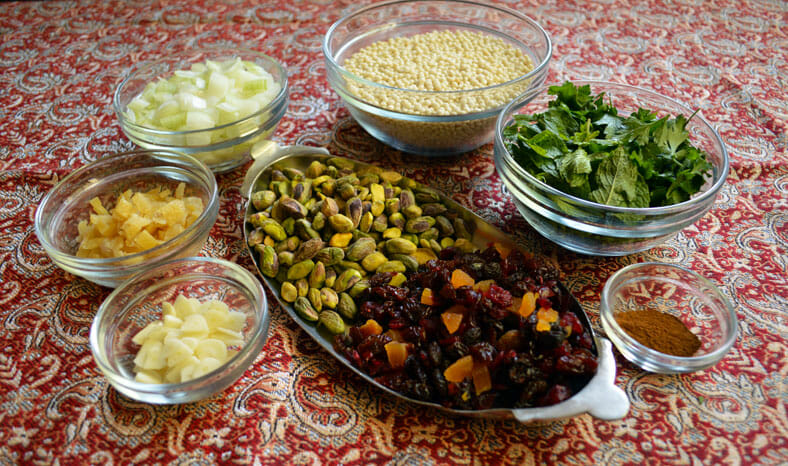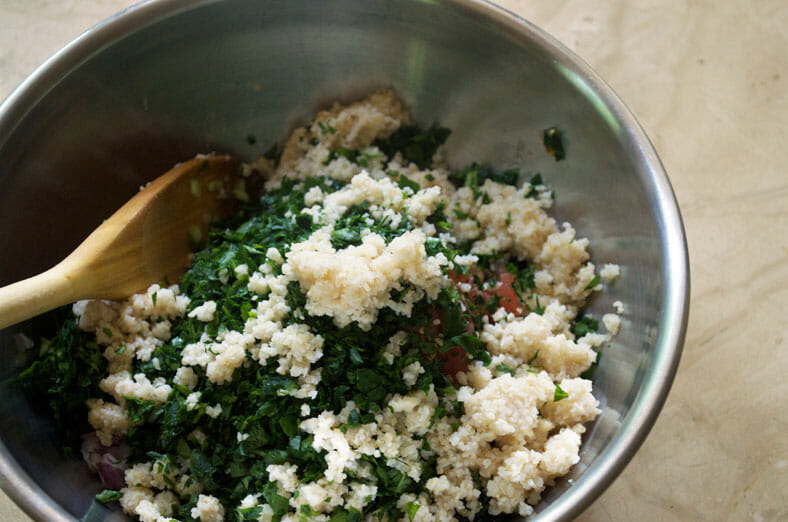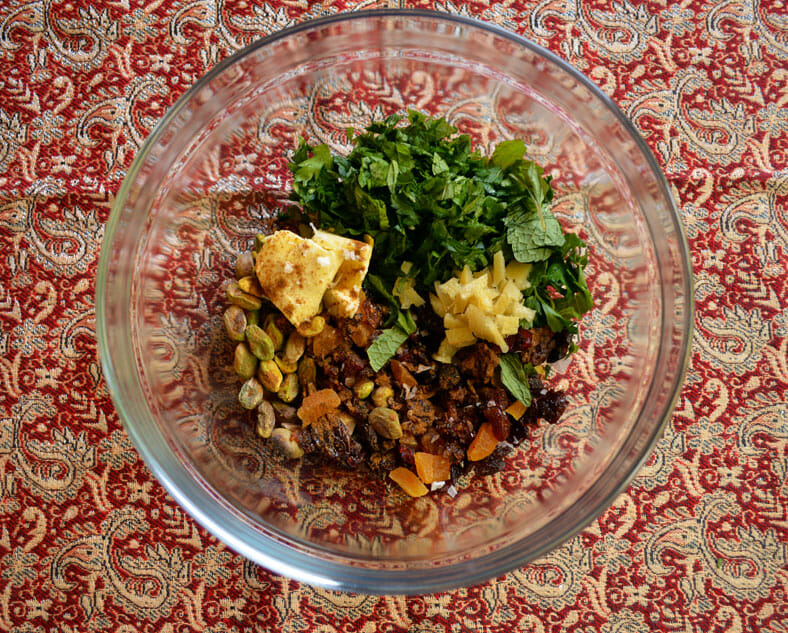In the pursuit for the perfect recipes for several “Friendsgiving” dinners and the actual Thanksgiving with my family, David Lebovitz has come through yet again. The flavor pairings in his My Paris Kitchen cookbook are brilliant overall, and this lemon-pistachio Israeli couscous recipe is an absolute treasure.
I was looking for something a little more out of the ordinary than what you’d usually find at your Thanksgiving meal, but not too exotic that it would turn anyone off. Consider it the “Arousing Appetites” way to cook something outside of the box, even on the most traditional of US holidays.

The Stars of the Show: Israeli Couscous and Preserved Lemons
The Israeli couscous has a blend of Mediterranean flavors – mint, parsley, lemon, nuts, and cinnamon – that come together with a lovely Parisian finesse.
The star of the show is the Israeli couscous, which is larger than traditional couscous and shaped like little pearls of pasta. As the name suggests, it’s origins are from Israel, when the country’s first prime minister requested a wheat-based substitute to rice. And thus, this Israeli couscous was created. It’s a very versatile ingredient. It can be either boiled like pasta or toasted in a skillet pan, and it works well for both savory and sweet dishes.
And what are preserved lemons? Preserved lemons are a staple in Indian, North African, and most iconically in Moroccan cuisine. In their home kitchens, they’re used in everything from stews to salads to rice. The art of preserving lemons in salt and their own lemon juice was simply to have them last through the winter, but the salting very pleasantly mellows out the bold, tart flavor while heightening the lemony essence. Trust us, it’s a really powerful ingredient to have.
By the way, if you love this recipe, check out our Lebanese lemon salad recipe.

Believe it or not, we actually made our own homemade ones, too. Around 8 months ago, I came first saw them and thought “well that sounds like a cool ingredient!” and set out to make them. It only takes 20 minutes to cut, salt, and jar them, but it takes far longer (at least 4-6 weeks) for them to reach this “preserved state.” If you want to make this recipe now, instead of 4-6 weeks from now, don’t worry… you can buy preserved lemons from speciality stores too.
For those who do decide to go the homemade route, they are honestly as easy as it gets to make. The only downside might be the valuable fridge space the jar will take take up, but it’s been worth it as we’ve used preserved lemons in at least a half dozen other recipes.
It wasn’t until this recipe, though, that I found the best (in my humble opinion) way to prepare and use them. It’s all about the rind, not the juice or pulp, for using in your recipes. You’ll see exactly how in the directions below.
Our Take on the Recipe

The lemon-pistachio couscous recipe is very simple, and the only actually cooking elements to it are boiling the couscous and frying the garlic and onions. The fried garlic and onions are an addition to the original recipe and were added as a nod to the most common ingredients cooked with traditional Israeli couscous. Plus, who doesn’t love garlic and onions?
As for the dried fruit, I’m not usually a fan, but it certainly works in this couscous recipe. A word of caution: many dried fruits are often packed and coated in unnatural added sugars, so keep an eye out for this on ingredient labels. I used a combination of dried, organic dried cherries, cranberries, raisins, turkish apricots.
I was very generous with the fresh herbs, using a mix of parsley (1/4 cup) and mint (1/2 cup), as well as the cinnamon. The fresh mint and parsley add vibrance to an already harmonious couscous dish, and the pinch of cinnamon provided an elusive, sweet-spicy sort of back note that elevated all flavors. Perfection.

Simply add all ingredients, except for the (uncooked) couscous, garlic and onions, to a mixing bowl. Toast the couscous in a pot for a few minutes, then add boiling water and cook for a five minutes or so. While the couscous is boiling, put a sauté pan over high heat and add oil. Then, add onions and garlic, string frequently to get an even golden brown fry. Add the cooked couscous to the bowl and mix all ingredients together, until the butter has completely melted, and then top with fried garlic and onions.
Et voila! This Israeli couscous dish will make an elegant, colorful side perfect for any dinner table. Perhaps even at upcoming Thanksgiving tables? You’ll bet it will at oursx It can be made it advance and it reheats beautifully.
What do you think of Israeli couscous? Do you enjoy using it in your recipes? Leave a comment below and share your experience
